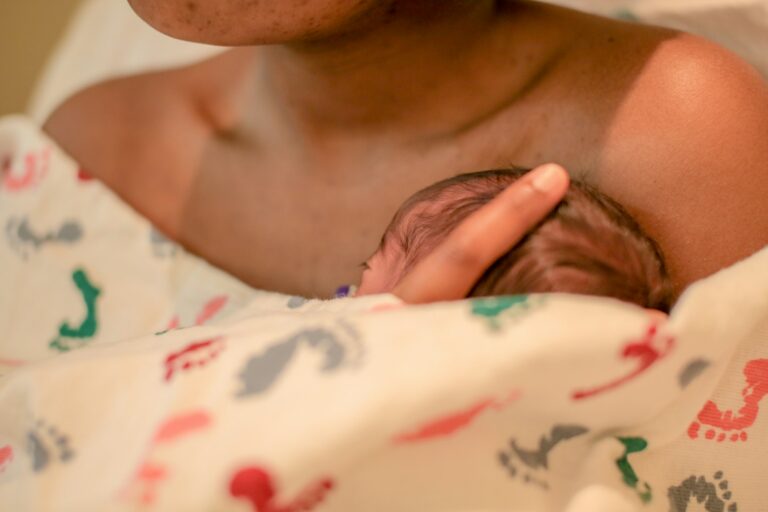Pregnant and physically active—two states that might, at first glance, seem at odds. Yet for countless parents, this combination ignites just as many questions as it does hope. Will moving too much jeopardize something precious? Could inactivity make common discomforts worse? The physiological shifts of pregnancy are immense, but so is the body’s ability to adapt and benefit from safe, well-chosen movement. If you are reading this, you are probably weighing the risks against the rewards, juggling fatigue against the well-documented health boost of physical activity, and wondering which advice to trust. The following discussion will explore the nuances of being pregnant and physically active—dispelling myths, embracing evidence, and providing clear, medically grounded direction for each trimester, nutrition, recovery, and emotional well-being. Expect rhythm, depth, and encouragement as you discover how to support both your health and your baby’s future.
Pregnant and Physically Active: Myths, Realities, and Mindset Shifts
You may have heard contradictory opinions: “Pregnant women should take it easy,” some say, while others insist that maternal fitness is essential. Let’s untangle the evidence. Pregnancy is not an illness. Unless you have specific medical contraindications, being pregnant and physically active is not just possible—it is scientifically recognized as an asset. Forget the antique warnings: no, exercise does not cause miscarriage in low-risk pregnancies, nor does it threaten fetal well-being when adapted to your needs. Instead, global health authorities—like the American College of Obstetricians and Gynecologists (ACOG), the World Health Organization, and the CDC—underscore the importance of tailored, regular activity. Moderation, adaptation, and medical advice are the keystones here; extremes are the adversary, not movement itself.
The Dual Reward: Physical and Emotional Benefits of Exercise During Pregnancy
Think of physical activity as a gentle engine humming in the background, facilitating improvements too often underestimated:
- Reduced low-back pain, improved joint stability, and better posture: As the uterus expands and the center of gravity shifts, musculoskeletal discomfort is extremely common. Appropriate activity—think walking, swimming, or gentle resistance training—stabilizes muscles and supports the spine.
- Shortened labor duration and enhanced recovery: Studies indicate that expectant parents who exercise regularly often experience more efficient labor and quicker postpartum healing.
- Decreased risk of gestational diabetes and hypertension: Two conditions closely linked to pregnancy can be mitigated by moderate, consistent exercise.
- Boosted mood and well-being: A surprising benefit—regular movement slashes the risk of both prenatal and postpartum depression by at least 25%. Endorphins, those “feel-good” neurochemicals, surge with aerobic activity and support emotional stability.
- Improved sleep quality and energy levels: Insomnia, a frequent companion of pregnancy, responds favorably to thoughtfully planned exercise.
When you choose to remain pregnant and physically active, you are not only nurturing your own body but shaping a healthier start for your baby as well.
Professional Recommendations: Guidelines and Precautions
What does “safe” really mean here? Leading authorities suggest at least 150 minutes weekly of moderate-intensity aerobic activity. What counts as “moderate”? If you can chat comfortably, but singing leaves you breathless, you’ve found the sweet spot—sometimes called the “talk test”.
Here’s where nuance is essential. Before initiating or maintaining an exercise plan, especially if you have a history of maternal hypertension, severe anemia, placenta previa, or other conditions such as preeclampsia, always confer with your healthcare team. Absolute contraindications (meaning exercise is not recommended) include, for example:
- Placenta previa after 26 weeks
- Risk of preterm labor or open cervix
- Severe fetal growth restriction
- Uncontrolled gestational hypertension or preeclampsia
The list may sound daunting, but for the great majority of parents, personalized adaptation—not elimination—of physical activity reigns supreme. For everyone else, the dictum remains: being pregnant and physically active is an evidence-based choice.
Safe Activities vs. Those to Put on Hold
Parents often wonder where the line is drawn. What can be enjoyed, and what should be set aside? Here’s a breakdown for clarity:
Activities Encouraged
- Walking: Universally accessible and easily adapted, walking is the champion of low-impact cardiovascular health.
- Swimming and water aerobics: The water’s buoyancy supports added weight, eases joint stress, and soothes swelling.
- Stationary cycling: Balance becomes less of a hazard, while aerobic fitness is maintained.
- Prenatal yoga or Pilates: With focus on flexibility, breathwork, and stress reduction, these methods target both body and mind.
- Strength training (light weights, resistance bands): Enhances muscle tone and can support postural adaptations as your body changes.
- Pelvic floor exercises (“Kegel” routines): These subtle contractions may not earn you a sweat-soaked t-shirt, but they build vital support to prevent incontinence and promote postpartum repair.
Activities to Avoid
- High-impact or contact sports with risk of collision
- Sports with high fall risk: skiing, mountain biking, horseback riding
- Extreme environments: scuba diving, or any activity with oxygen deprivation risk
- Motion on your back after roughly 16-20 weeks: this position can impede blood flow due to uterine weight on main vessels
- Hot yoga or vigorous exercise in high-temperature settings
- Any practice—no matter how “gentle”—that triggers pain, dizziness, vaginal bleeding, or other concerning symptoms
Remember, being pregnant and physically active should always feel supportive, never punishing or alarming.
Adapting Your Practice Across Trimesters
Pregnancy is not a static state—what feels good in week eight may be impossible in week thirty-one.
First Trimester
Nausea, fatigue, and emotional upheaval often disrupt even the best-laid plans. Sometimes, walking around the block may be all you can muster. That counts. For those with energy to spare, little physical change means most activities can continue, with a watchful eye for overheating.
Second Trimester
As energy blossoms again, your biomechanics begin to shift—think of a subtle realignment with every growing week. Modify intensity if needed. Stability takes priority; joints, softened by relaxin (a hormone designed to help your pelvis open for birth), are more vulnerable to strain. If you loved running before pregnancy, you might continue—often until month five—before switching to lower-impact alternatives.
Third Trimester
Now the art of listening deeply to your body becomes non-negotiable. Fatigue, abdominal heaviness, and shortness of breath can dictate slower movement, more rest, and deeper prioritization of mind-body practices like prenatal yoga or aquatic exercise. Focus on birth preparation, not personal bests.
Nutrition and Hydration: The Unsung Pillars
Pregnant and physically active does not only concern muscles and bones—it is deeply intertwined with macronutrient and fluid requirements:
- Calories: Add about 300–500 extra per day during the second and third trimesters if you’re maintaining physical activity.
- Hydration: 8–10 cups of water daily, with more in warm weather or if your workouts intensify. Dehydration can present as headache, dizziness, or dark urine—signals to slow down and rehydrate.
- Pre-exercise snacks: Prioritize easy-digesting carbohydrates and light protein (example: banana with nut butter).
- Post-exercise recovery: Include protein and carbs, like a fruit smoothie or wholegrain crackers with cottage cheese.
Supplementation is also non-negotiable: prenatal vitamins, with particular emphasis on iron, folic acid, and calcium. Deficiencies are not uncommon during gestation, and athletic parents may be at elevated risk.
Risks, Warning Signs, and What to Watch For
Even with optimal planning, some scenarios require immediate attention. Physical activity must be paused and medical input sought if you experience:
- Vaginal bleeding or fluid leakage
- Severe headache or sudden visual changes
- Chest pain, difficulty breathing, or heart palpitations
- Painful uterine contractions before term
- Pronounced swelling or calf pain
- Reduced or absent fetal movement
Some discomfort is normal; anything sudden, severe, or persistent is not. Trust your body’s wisdom—overexertion, dehydration, and overheating are to be avoided at every stage.
Overcoming Barriers: Facing Fatigue, Motivation, and Time
“Where on earth am I supposed to find the energy?”—a question surely familiar. Fatigue, nausea, and scheduling conflicts often challenge even the best intentions. The solution does not reside in perfection, but in pragmatism. Try:
- Splitting activity into ten-minute segments throughout your day
- Exercising at the time nausea is least intrusive
- Setting modest, attainable goals
- Choosing activities that genuinely appeal—enjoyment begets consistency
- Enlisting your partner or joining prenatal classes for built-in support
Each step on the path when pregnant and physically active counts; relentless progress is neither expected nor necessary.
How Maternal Activity Improves Outcomes for Mother and Child
What does science actually show here? Moving during pregnancy—assuming medical safety—confers measurable advantages:
- Improved fetal heart rate variability, a sign of robust development
- No higher risk of premature birth from moderate exercise—in fact, risk may decrease in some cases
- Lower incidence of postpartum depression, thanks to shifts in neurochemicals and sleep patterns
- Diminished risk of excessive gestational weight gain or postpartum retention
- A shorter, more efficient labor, plus smoother recovery
In sum: being pregnant and physically active molds the landscape for a healthier start on both sides of birth.
Safe Postpartum Return: Nurture, Don’t Rush
After the arrival of your baby, another phase of adaptation begins. Expect that your personal timeline will look nothing like anyone else’s. For those with standard, uncomplicated births, gentle movement—walking, pelvic floor exercises—may resume within days. If you’ve had a cesarean or complications, healing may unfold more slowly; patience is not optional, it is healing’s best friend.
- Benefits of early, appropriate postpartum activity include reduced clot risk, improved mood, energy restoration, and support for healthy weight regulation.
- Focus on core and pelvic floor rehabilitation, paced slowly and, ideally, under guidance from a pelvic physiotherapist.
Self-compassion beats comparison: your body deserves every ounce of it.
Expert Guidance: Medical and Community Support
Obstetricians, midwives, physiotherapists—these are more than sideline advisers. They can provide individualized exercise prescriptions, answer complex questions, and trouble-shoot unexpected challenges. If discomforts arise, adjustments can be made. Evidence-based resources (like ACOG, CDC, or local midwifery collectives) are at your fingertips. Emotional encouragement matters too—support from partners, friends, community groups, even digital platforms, has measurable positive effects.
Key Takeaways
- Pregnant and physically active is an achievable, beneficial goal for most parents—one supported by compelling science.
- Regular activity lowers rates of gestational diabetes, hypertension, and supports optimal physical and mental well-being for parent and baby.
- Choose safe, adaptive exercises and honor the changes in your body with every trimester. There is no universal right answer—your body’s signals are the very best guide.
- Proper nutrition and hydration underpin your activity; neglecting them undercuts well-being for both you and your baby.
- Postpartum recovery is profoundly personal: honor your pace, prioritize pelvic floor health, and cut yourself plenty of slack.
- Professional support is never out of reach—healthcare providers, therapists, and evidence-based resources exist to guide and reassure.
Need guidance personalized to your unique journey as a parent? Discover more, get expert advice, and benefit from free health questionnaires for your child by downloading the Heloa app—an ally for informed, empowered parenting at every step.
Questions Parents Ask
Can you start exercising during pregnancy if you were not active before?
Absolutely, starting gentle physical activity during pregnancy is often possible, even si you were not already exercising. Consider beginning with easy, low-impact activities like walking or gentle prenatal yoga. Take it slowly and listen to your body’s signals—there’s no pressure to push yourself. Consulting your healthcare professional before you begin is always a reassuring step to ensure your plan fits your unique circumstances. Little by little, movement can become part of your routine, even if you’re just getting started.
How can you tell if you’re doing too much physical activity while pregnant?
It’s natural to want to do your best, but sometimes your body might send signals to slow down. Watch for signs such as unusual fatigue, dizziness, shortness of breath that doesn’t improve with rest, or any pain or discomfort. Experiencing vaginal bleeding, swelling, or feeling unwell are also indicators to pause and check in with your healthcare professional. Rest assured, it’s perfectly normal to need extra breaks or days off—embarking on this journey with gentleness toward yourself is essential.
What are some tips for staying motivated to exercise during pregnancy?
Maintaining motivation can be a real challenge, especially with fluctuating energy and possible discomforts. Try setting modest goals and celebrate every small success. Choosing activities you enjoy helps movement feel less like a task. Exercising with a partner or joining a group can offer valuable encouragement and support. If motivation dips, remember that even a short walk or a few stretches make a difference—there’s no need for perfection, only progress at your own rhythm.
Further reading:









